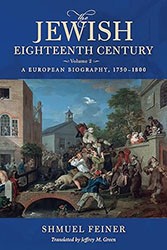In the history of resistance to Nazi terror, one region of France played a significant part. Historians have debated why so many residents of Le Chambon-sur-Lignon — a village under the Vichy collaborationist government in the south of the country — refused to cooperate with German oppression. Margi Preus’s new middle-grade novel is a swiftly paced and engrossing story with unforgettable characters forced to make decisions under extreme circumstances. Readers will learn that heroes do not always act fearlessly, but rather find strength in cooperation with others who share both their own convictions and moments of doubt. Village of Scoundrels is a beautifully crafted historical novel whose vision emerges naturally from its narrative.
Many of the residents of the town — given the fictional name of Les Lauzes — are religious Protestants, descendants of the Huguenots who experienced persecution in their country’s past. The clergy deliver their parishioners the message that all humans, including Jews, deserve the same respect, and that pressure by Vichy to betray their neighbors should be countered by a commitment to protect them. Chapters alternate between the perspectives of different characters: young Jewish refugees, Christian teens committed to aiding the Resistance, protective adults who provide refuge and encouragement. Each person has a unique history. Philippe, a high school student who risks his life guiding Jews to the Swiss border, has left an abusive father who denigrated his son’s ability to succeed at anything. Henni is a Jewish girl who escaped a concentration camp but was forced to leave her mother behind. Jean-Paul Filon is a young Jewish man skilled at forging documents. Preus reveals how central the production of these papers was to saving lives by the careful construction of falsehoods, requiring a reversal of accepted moral standards. Jean-Paul remarks with surprise when another teen presents him with extensive equipment for his job, “‘Are you telling me…that the teachers are forging documents?’ Had he stumbled into a den of criminals or some kind of forgery utopia?”
The character of Officer Perdant, a French police inspector who willingly implements Nazi policies, is a crucial counterpoint to the residents of Les Lauzes. Although he intermittently questions his own motives, he is always able to justify the easier path of collaboration with evil. Self-reflection alone is not a guarantee of courage. Perdant’s weakness is contemptible in the context of his environment, but the author resists portraying him as a caricature, instead offering examples of how easily fear and prejudice can combine to produce deadly results.
Plot, language, and character work seamlessly together to drive the narrative. Each section of the book is preceded by a chapter title, a date, and a simple but dramatic black and white picture by S.M. Vidaurri, lending a cinematic effect. Titles emphasize the tumultuous times and are often ironic, as in “Christmas Magic – December 25, 1942,” which refers to the town’s pastor converting his Christmas sermon into an anti-Nazi speech. There is no sense of inevitability as unpredictable events unfold, demanding changing responses. Jean-Paul’s warning to his friend, Léon, underscores the terrible process by which freedom is gradually eroded under authoritarianism: “The Nazis and their puppet government in Vichy take away rights and make new restrictions little by little, so you can’t keep ahead of them. There are always new criteria for arresting people.” The simplicity of Jean-Paul’s warning summarizes the core of this exceptional story, as imperfect human beings find the ability to confront the unthinkable with bravery and grace.
Village of Scoundrels is highly recommended and includes an outstanding “Epilogue,” which explains thoroughly the novel’s historical background and the models for its characters. It also includes photographs, lists of additional resources, and a timeline.
Emily Schneider writes about literature, feminism, and culture for Tablet, The Forward, The Horn Book, and other publications, and writes about children’s books on her blog. She has a Ph.D. in Romance Languages and Literatures.




